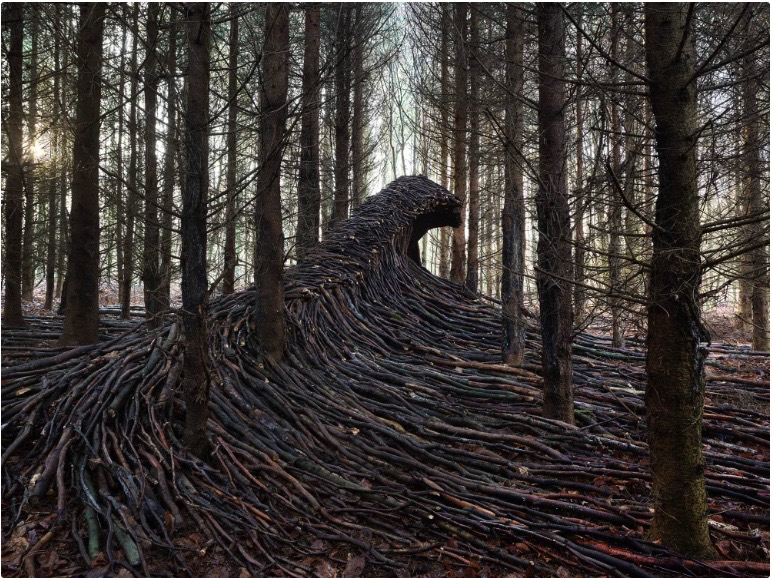In his photos, mysterious waves roll through the dark forest. Now there is an exhibition and a great artist book
A few years ago, photo artist Jörg Gläscher stalked through the Saxony Forest with his camera. He was looking for motifs for the oppressive mood during the Corona lockdown. He also needed a physical challenge in those times of mandated standstill. In the forest he came up with the idea of building a man-high wave out of branches and broken wood lying around, without machines and without outside help. Only with his own hands and the material that was lying around in the forest. That was the birth of his Waves project. He has now built twelve wave structures in the forest, working hard, sometimes with helpers, always with the aim of capturing them photographically after they are completed. He then dismantles the sculpture or recycles the material for the next wave construction. The resulting images are beautiful and disturbing at the same time. The forest seems lifeless, almost eerie, the wave of branches unreal. Nevertheless, it is not a foreign structure. It is made of forest and fits perfectly into the landscape. Disorder through mimicry. When you look at it, contradictory associations are triggered: romance meets catastrophe, manipulation beats naturalness, the sea is made of wood.
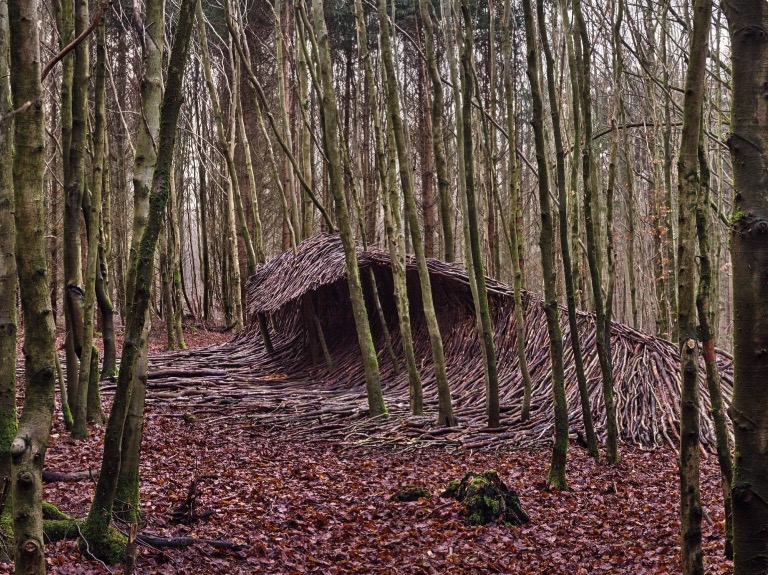
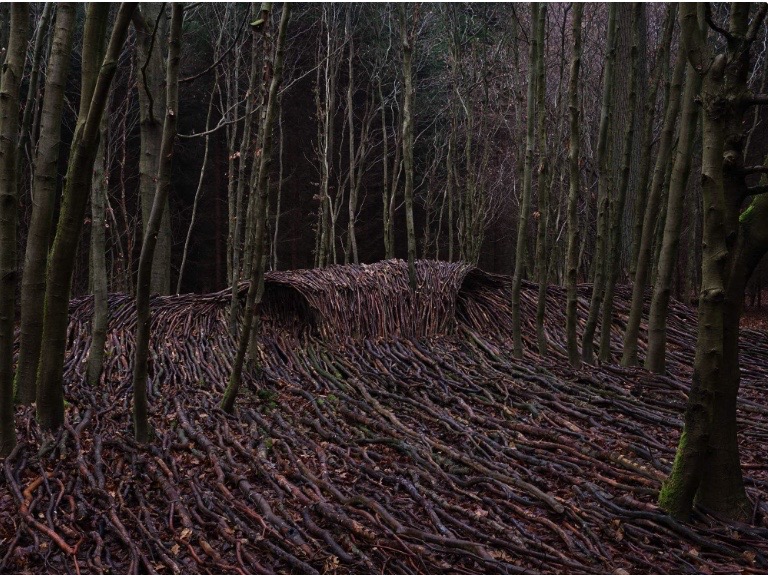
Jörg Gläscher originally comes from documentary photography. We know each other from the times when he didn't photograph his own sculptures, but other people's art. As a team of reporters, we traveled to the Venice Biennale, chased the Shah's hidden art collection in Iran and chased the Icelandic artist Ragnar Kjartansson in rain and snow in Iceland. He has now sworn off photojournalism and is realizing his own artistic projects. With success. His global photo book Der Eid/The Oath about public servants and understanding of democracy was named “one of the most beautiful German photo books” by the Buchkunst Foundation in 2022.
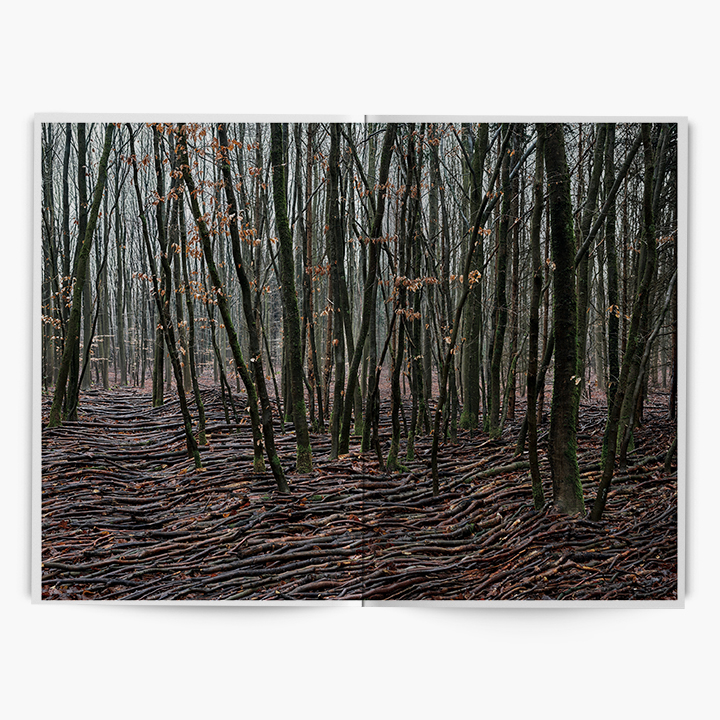
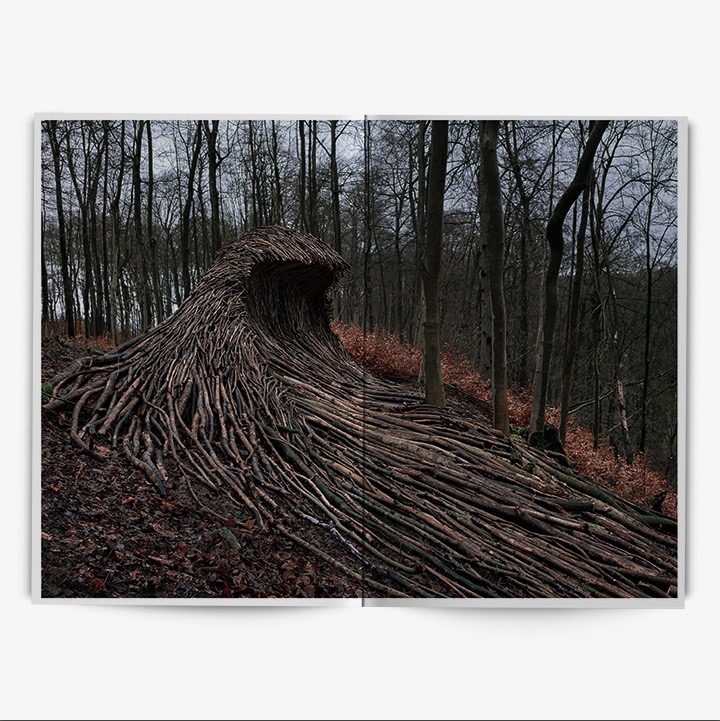
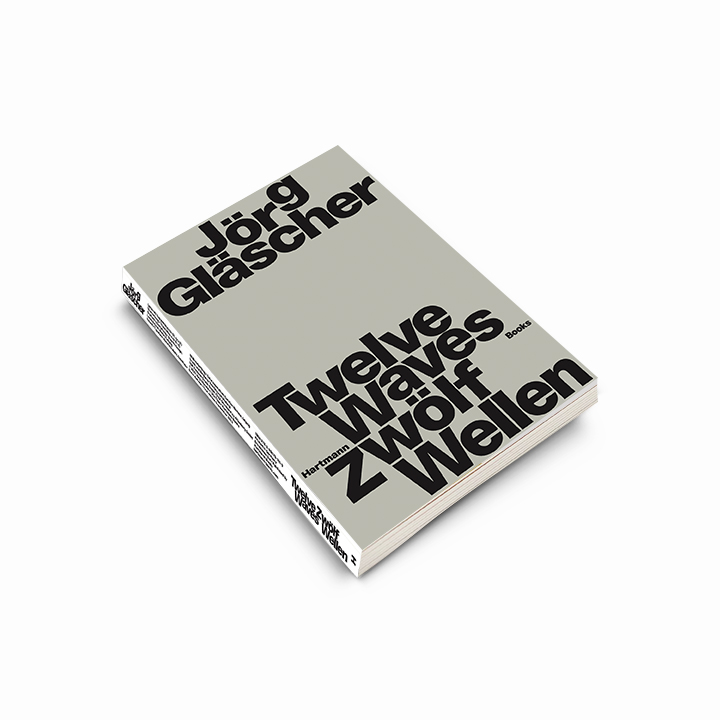
His latest artist book, Twelve Waves, is also an eye-catcher. It presents Gläscher's energetic forest and wave works on extra-thick picture book cardboard. The waves are currently featured in the exhibition Panta as large-format photographic works. Water moves can be admired in the Paderborn City Museum (until January 21, 2024). There the artist also built another wave in person, which floods the historic monastery garden until the end of the show.
You can find out more about the wave project in the interview I conducted with Jörg Gläscher for the book. Here is an excerpt:
Going into the forest with an ax, dragging tree trunks through the mud in the rain - it all sounds pretty archaic and male. How important is the physical challenge in these projects?
This is part of the process of creating the work. I don't cut down any trees for this work, that's important to me. But I bring in the dead branches from all over the forest. It is a meditative process that is also very physically demanding. This feeling of being alone and quietly working is something completely different - especially when you are working in a dark forest in autumn. Then you are completely focused on yourself and your work.
Waves are very symbolic, not just in the linguistic sense. In art history, paintings with sea waves form their own subgenre of landscape painting. And of course there is the world-famous Wave by Katsushika Hokusai, actually a Japanese woodblock print from the 19th century. She even has her own emoji. Are you playing with this pop culture iconography?
Of course I look left and right to see what kind of references there are. I also looked at a lot of seascapes - not so much the paintings of sea battles, but rather the lone sailing ship battling the forces of nature. This fascinates me because I am also a sailor myself. Hokusai's wave in particular is incredibly widespread, from emojis to the motif on coffee cups. I also thought about recreating that iconic wave for a millisecond. But when I was alone in the forest, I quickly realized that I had to break away from these art-historical connections. I don't have to quote that. These images are in the collective memory. My work stands for itself.
Your waves are not just in the forest, they are made of forest. There are other cultural-historical questions that arise: the German forest is quite a controversial topic, a source of inspiration for poets and thinkers, and the setting for Grimm's fairy tales. In Romanticism it became a projection surface for freedom in contrast to the strict social order, and in Fascism it became a nationalist symbol. Today, climate activists are climbing trees to protect the forest. How do you position yourself in this heavily occupied terrain? Klimaaktivisten zum Schutz des Waldes auf die Bäume. Wie positionierst du dich in diesem stark besetzten Terrain?
Inevitably you have to think about it. As already mentioned, working on the Corona complex in the forest liberated me photographically. She led me to new paths. But I have to admit that I didn't take the thick cultural-historical bar that lies over the term "forest" with me into the forest. The project is not a structure based on a cultural-historical script. Even though I had experiences like something out of a storybook: When the sun is shining, you take a break on a picturesque mossy area, the ax is still stuck in the wood and suddenly a deer comes by. Or when a thunderstorm is brewing and the trees creak. It makes you think about whether these are majestic creatures or just dead matter. Fear fantasies also arise. But the question in the eternal art discourse remains: Do I have to know all cultural-historical references and work on them in order to then differentiate my work from them? Yes and no. Or do I leave the door open beforehand, leave it outside and pass the question on to the viewer.
I think we can't avoid the concept of romanticism when we look at your pictures. They radiate something darkly romantic. The follow-up question would be, do you want to create a disturbance? Or are you more interested in harmony?
A wave is a spatially spreading periodic oscillation or a one-time disturbance of the state of equilibrium," according to the scientific definition. So a wave is a disturbance per se. A wooden wave structure in a winter forest is also a disturbance. But this disturbance fits harmoniously into the environment and does not work against it. You could say the disorder is in flux. What's fascinating about the setting in the forest is that the microscopic possibility flashes in your mind that this wooden structure could have been created by a gust of wind. Completely without human hands. It will be different in the Paderborn City Museum, where I will install a wave in the monastery garden, in an urban environment. It remains to be seen what this disruption will result in.
Jörg Gläscher: Twelve Waves/Zwölf Wellen is published by Hartmann Books and costs 34 euros.
